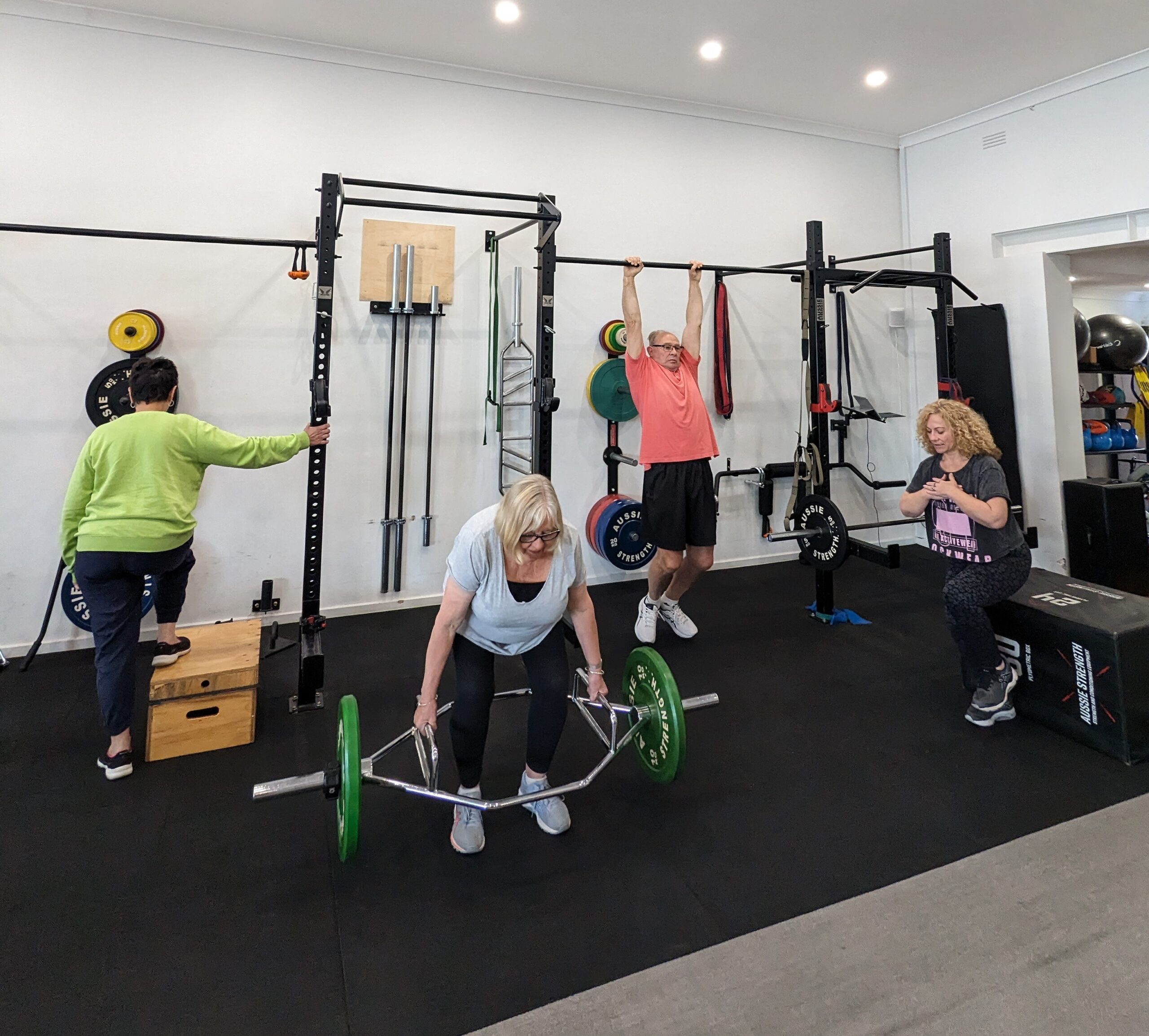Imagine stepping into your doctor’s office for a routine health check-up, to find out that your blood pressure is elevated. Confused, you’re beginning to wonder what the 130/80 number on the monitor means? Does it mean you are stressed? Or are you beginning to encounter the first signs of hypertension? The uncertainty can be unsettling though fortunately the major consequences of elevated blood pressure, (namely strokes and heart attacks) do not often eventuate until much later after these readings first show up, and there is time to reverse it before then.
Attaining early and powerful indicators of the predominant diseases like cardiovascular disease, strokes and cancer has always been one of the primary aims of modern medicine to reduce preventable mortalities and lengthen a patient’s life. Today we have well established risk factors like blood pressure, blood glucose levels, cholesterol profiles and questions about health behaviours like smoking, which are commonly assessed in your routine health screening. All of these provide insight and some level of predictive power for future disease and mortality risk.
In health research, the predictive utility of these markers is often expressed through a hazard ratio (HR). A hazard ratio typically compares two groups, for example 40-year-olds with normal blood pressure and 40-year-olds with high blood pressure. They are looking to see if one group has a higher mortality rate than the other over a certain time period. In this study, 40-year-olds with hypertension (10mmHg increase in systolic blood pressure) had a HR of 1.37 or 37% increase in mortality from any cause compared to normotensive 40-year-olds over a 10-year period [1].
37% is a considerable increase in risk of mortality. Though what if there were measures that which could detect a 200, 300 or even 400% difference in your risk of mortality? Wouldn’t you want to know how you score on these too?
Thankfully there are such indicators, in the form of physical fitness measures. These possess enormous predictive power for our future risk of mortality over most conventional measures whilst also providing crucial insight into healthspan, defined as the degree to which we retain functional independence and good health as we age.
We do not merely care about the number of years we have on this planet; we also care about the quality of those years and whether we are able to participate in the activities we desire. This might involve things like going for a walk with family members, playing pickleball with our friends, or even simply engaging in the everyday self-care activities we often take for granted.
As we begin to reveal these measures, we will compare them to other conventional risk factors and health conditions throughout to better understand the importance of these capacities for lifespan and healthspan.
VO2max: The ultimate predictor
The maximal volume of oxygen consumption or (VO2max) is a measure of the highest amount of oxygen your body can effectively utilize as energy, reflecting the efficiency of oxygen delivery to the muscles. It is a critical indicator of cardiovascular fitness and aerobic endurance.
Think of VO2max as similar to your car. Your car has a certain amount of power and milage per tank of fuel. All determined by how sophisticated and efficient the engine and different systems are. Depending on how hard you push the car will depend on how far you get on one tank. But so will the type of car. Having a high VO2max is like having a powerful and fuel-efficient car, it means you can work harder for longer before you’re truly gassed.
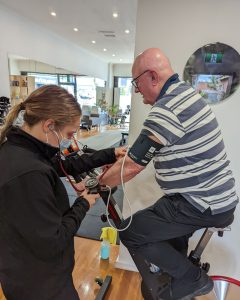
Testing VO2max is commonly performed in a laboratory setting with gas analysis. You might have seen athletes running on treadmills with hoses attached to their mouths looking like Bane from the Dark Knight. The truth is you don’t need a high-tech laboratory setting to know your VO2max, there are numerous bike, treadmill, rowing and field based tests that can get a pretty good estimate of your VO2max. You certainly don’t have to be an athlete either. In fact, everybody, young or old, sick, or healthy should have some gauge of their VO2max.
Knowing your VO2max can determine what activities you are safe to engage in and how hard these will be for you to perform.
It is worth knowing what the measurement looks like. Your VO2max is expressed as a relative number in milli
litres (of oxygen) per kilogram (of body weight) per minute (ml.kg.min). For example, the world’s best cross-country skiers have some of the highest vo2max scores (around 90 ml/kg.min) whilst the minimum required for independent living is around 17.5 ml.kg.min.
To understand how much oxygen is required for different tasks of daily living we use something called METs. 1 MET = the amount of oxygen consumed whilst sitting. To convert your VO2max score to METs simple divide by 3.5. So, if your VO2max is 35 ml.kg.min then the hardest activity you can handle is one which requires 10 METs. For reference, activities like lawn mowing requires roughly 6 METs (or 21 ml.kg.min). This is a good way to determine what tasks you are able to perform and which ones you might struggle with.
If you’re curious about the METs needed for activities, you like to engage in you can search for them here https://golf.procon.org/met-values-for-800-activities/
VO2max and risk of mortality
VO2max is one of the most powerful predictors of your future risk of death from any cause. studies in middle aged adults followed over 8 years found that those with a low VO2max versus those in the top range for their age had a five-fold (400% increase) difference in the rate of deaths from any cause [2]. To put this in perspective, the risk of all cause mortality for having liver cirrhosis, a highly dangerous and advanced form of fatty liver disease, is 370% [3]. Even modest improvements in your fitness can have a disproportionately large effect on your risk of death and disease in the future. Just going from below average fitness to above average fitness is a 3-fold difference in risk of mortality [2]. So, if you are a 55-year-old female this is essentially going from 26.ml.kg.min to 31.ml.kg.min. Moreover, the risk reduction accumulated by an increase in fitness seems to have no upper limit, this means with every shift upward in your fitness, you are undoubtedly conferring a benefit.
Muscular Strength: The Foundation of Independence
Sarcopenia is an ever-increasing cause of mortality and disability globally. It is driven by age-related decline of muscle mass and strength over time, contributing to falls which are the leading cause of accidental fatalities and injuries among those aged 65 and above [4].
The evidence for strength as one of the most crucial components of fall related and all-cause mortality risk is now strongly instantiated. Comparative analysis reveals a profound difference in mortality risk stretching from 2.46 (146%) to 4.39 (339%), when contrasting individuals with low strength and high strength (assessing multiple areas of muscle strength) [5]. Remarkably, this high-end difference of 339% in risk emerges more prominently in women, suggesting that elevated strength might yield a disproportionately amplified advantage in reducing mortality among women [5]. To reflect just how significant this difference in risk is, we can look at the difference in mortality risk observed in individuals with HIV versus the general population, which has a similar difference in risk over the same time period (~3-fold increase risk of mortality over a 5 year period) [6].
These powerful associations are found with collective strength measures assessing multiple aspects of strength (e.g. upper body, lower body together). These are better predictors than any single measure in isolation, however, there are single measures that hold significant value in determining not only our future risk of death but also our ability perform physical tasks required to remain independent and self-sufficient.
Grip Strength: An Irreplaceable Indicator
From swinging on branches to throwing spears, gripping has been a vital part of human evolution, and its relevance has not yet ceased. We require grip strength to perform a multitude of tasks such as carrying groceries, opening jars, using tools, or playing sports like tennis.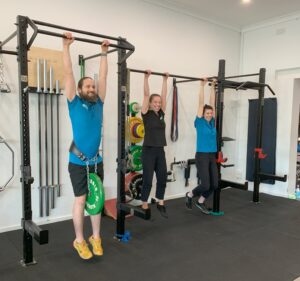
Grip strength is usually measured with a handheld dynamometer or tested with functional exercises like a static weighted carry. The minimum cut off for grip strength needed for older adults to perform tasks such as lifting and carrying objects around (of ~10kg) is 18.5kg for women and 28.5kg for men [7].
There appears to be a dose response relationship between grip strength and cardiovascular and all-cause mortality risk, meaning the stronger your grip the higher your life expectancy. It is even associated with cognitive and emotional health across the lifespan. The difference in risk between grip strength in the bottom third of individuals and top third is 233% [8]. This is greater than the risk of mortality between smokers and nonsmokers (196%) [9].
Knee Extension Strength: Brakes > breaks
Knee extension stands as a pivotal element in lower limb function, primarily governed by our quadriceps muscles. These muscles are vital in maintaining our upright posture, aiding in deceleration, preventing falls, facilitating crouching, and ensuring stability while walking downhill or downstairs. A minimum of 45% of your body weight in knee extension is required for the ability to walk independently [10].
Knee extension strength is an independent predictor of all-cause mortality with a 94% increased risk in women and a 46% increased risk in men when comparing the weakest quartile to the strongest quartile [5]. It can predict falls risk and survivability after a fall with a hazard ratio of 3.1 (210%) for risk of death one year after fall [11]. Surprisingly, knee extension strength matters a lot more for our survivability a lot earlier than we think. Adolescents (16 -19 years old) followed over 24 years who possessed higher levels of knee extension had a 20-35% lower incidence of premature death from any cause, through potential mitigations in psychological and cardiovascular health [12].
Hip Strength: A Steady Base
Similarly to our knees, our hips play a significant role in maintaining our upright posture, facilitating bending, ascending stairs, balancing, and transitioning between sitting and standing positions.
For individuals aged 81-89 years old, the threshold for performing activities of daily living concerning hip flexors is 2.3 N.kg, while for hip extension, it’s 1.7 N.kg. Interestingly, hip extension strength has been identified as the foremost factor in lower limb strength crucial for activities of daily living [13]. This may not seem substantial, translating to just 14 kg for an 80 kg individual, but even this seemingly modest amount becomes pivotal due to the decline that comes with age.
Remarkably, hip extension strength serves as an independent predictor of mortality. Intriguingly, its significance could be amplified for women, as there exists a stronger correlation between all-cause mortality and the risk of hospitalization in women with weaker hip extension strength [3]. Among women in their 70s, the mortality risk escalated by 3.8 times for every 0.5 standard deviation decrease in hip strength (equivalent to approximately 2.7 kg) [14].
Shoulder Strength: More than Aesthetics

While leg strength often receives the most attention for overall bodily function and fall prevention, the significance of upper body and particularly shoulder strength in daily life cannot be overstated. It provides crucial support for tasks such as reaching high shelves, opening doors effortlessly, handling luggage, lifting boxes comfortably, and in numerous sports and from swimming to golf.
Low relative shoulder strength emerges as an independent risk factor, contributing to a 49% higher risk of mortality in men and a 71% higher risk in women [3]. Surprisingly, shoulder strength demonstrates a stronger link to mortality in men compared to either low knee strength or hip strength. This correlation is further underscored by the elevated risk of cardiovascular disease in men with relatively weak pushing strength [15].
Muscular Power: A Swift decline
Strength and power share a close relationship, where power is essentially the speed at which strength is exerted. The ability of muscles to generate force rapidly seems to be a critical factor for maintaining functional independence. Recent evidence is beginning to emphasize power as the most important aspects of muscular function for future falls and all-cause mortality risk [16].
compared to other physical capacities, power experiences an earlier decline in life, typically around the age of 40 and at a faster rate, twice that of strength reduction and three times swifter than the rate of muscle mass loss [16]. When contrasting individuals with high relative muscle power versus those with low power, the risk of function decline increases by 130% for men and 160% for women. To put this in perspective, the risk of all-cause mortality among individuals working with and exposed to asbestos for over 15 years was 140%, compared to non-exposed individuals [17].
Skill-Related Fitness: Beyond Strength
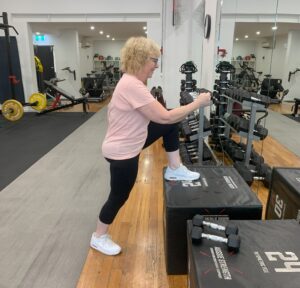
The age-related decline in physical function can only partly be explained by the loss of muscle mass or muscle strength [18]. How well can you navigate around objects in your environment, shift your body weight, and use your senses to determine how your body is positioned? These are all essential components of physical functioning and our ability to execute more complex activities of daily living.
Balance: Unperturbed
Maintaining balance is the product of multiple systems working together to understand how our body is positioned in the world. It is highly associated with the risk of all-cause, cancer and CVD mortality [19]. One study found that those with longer single leg stance times had a 200% higher survival rate over 13 years [20]. This is not only applicable to the elderly, but there are also associations even earlier in middle aged adults, however the balance tests usually require a sensory component to detect the increased risk.
Agility: Overcoming Obstacles
Agility is a facet not commonly assessed with all-cause mortality. Measures of agility are shown to be powerful in predicting premature death from any cause [21]. individuals with low scores for agility on a test featuring changes of direction and sitting to standing showed a 320% difference in risk between those in the top third [21]. Agility testing is challenging and integrative, requiring speed, dynamic and balance for displacements in various directions, though true agility testing also requires a reactive component or it is just a change of direction test.
Reaction Time: Staying Sharp
Reaction time is one of the crucial aspects involved in reactive agility and involves responding to unexpected elements in our environment. It serves as a crucial element of our independent functioning, playing a vital role in activities such as driving, swiftly catching falling objects, evading obstacles in busy surroundings, traversing uneven terrain, and effectively addressing unforeseen balance challenges.
Reaction time has been established as an independent risk factor for both all-cause mortality and cardiovascular disease [22]. A reaction time slower by 1 standard deviation equates to a 25% increase in all-cause mortality and a 36% rise in cardiovascular disease mortality. Notably, our variability in responding to these challenges holds significance; it exhibits a stronger predictive capability for both all-cause mortality and cardiovascular disease, with a respective increase of 36% and 51% for each 1 standard deviation change. Alongside the other robust risk factors previously mentioned, reaction time offers an additional diagnostic tool to assess our functional status and life expectancy. It underscores how even subtle changes in reaction time correlate with a mortality risk akin to that of having fatty liver disease versus no fatty liver, which reflects a 26% increase in risk over an 8-year period [23].
Conclusion
In pursuit of a longer and more agentic life we must have some appreciation of our current physical status. These capacities are unique, in that they provide incredible predictive power of not just the length of our life but the quality of the years we will spend whilst alive. VO2max, strength, power and skill related fitness tests are no longer reserved for athletic populations and sports performance. They are for everyone, because even though we might not care about running a marathon, these capacities underpin all the activities which hold personal significance, from playing with the grandkids to simply spending less time in medical facilities. By taking proactive steps to comprehend and enhance these aspects of physical fitness, we can augment both the quantity and quality of our years.
If you wish to understand how you currently rank on these key capacities, you can book a longevity assessment appointment on our website.
This article is the first part of a series of articles which serve as a basis for understanding why different aspects of our physical function are central to the pursuit of longevity. In our forthcoming article, we will delve into the normative values associated with each capacity and chart their trajectory of change over the course of our lives. This exploration promises a clearer understanding of how these indicators evolve, providing valuable insights into the dynamics of our physical well-being .
.
Written by: Christopher Kardaras AEP, AES
If you are interested in reading more please see the related articles:
Our “Cardio Fitness Test” & why it is important to know your fitness level (VO2max)
Why it is so important for the elderly & older adults to lift weights
References
- Murakami, Y., Hozawa, A., Okamura, T., Ueshima, H. and Evidence for Cardiovascular Prevention From Observational Cohorts in Japan Research Group (EPOCH-JAPAN), 2008. Relation of blood pressure and all-cause mortality in 180 000 Japanese participants: pooled analysis of 13 cohort studies. Hypertension, 51(6), pp.1483-1491.
- Mandsager, K., Harb, S., Cremer, P., Phelan, D., Nissen, S.E. and Jaber, W., 2018. Association of cardiorespiratory fitness with long-term mortality among adults undergoing exercise treadmill testing. JAMA network open, 1(6), pp.e183605-e183605.
- Fleming, K.M., Aithal, G.P., Card, T.R. and West, J., 2012. All‐cause mortality in people with cirrhosis compared with the general population: a population‐based cohort study. Liver International, 32(1), pp.79-84
- Burns, E., 2018. Deaths from falls among persons aged≥ 65 years—United States, 2007–2016. Morbidity and mortality weekly report, 67.
- Guadalupe-Grau, A., Carnicero, J.A., Gómez-Cabello, A., Gutiérrez Avila, G., Humanes, S., Alegre, L.M., Castro, M., Rodríguez-Mañas, L. and García-García, F.J., 2015. Association of regional muscle strength with mortality and hospitalisation in older people. Age and ageing, 44(5), pp.790-795.
- Edwards, J.K., Cole, S.R., Breger, T.L., Rudolph, J.E., Filiatreau, L.M., Buchacz, K., Humes, E., Rebeiro, P.F., D’Souza, G., Gill, M.J. and Silverberg, M.J., 2021. Mortality among persons entering HIV care compared with the general US population: an observational study. Annals of internal medicine, 174(9), pp.1197-1206.
- Bohannon, R.W., 2019. Grip strength: an indispensable biomarker for older adults. Clinical interventions in aging, pp.1681-1691.
- López-Bueno, R., Andersen, L.L., Koyanagi, A., Núñez-Cortés, R., Calatayud, J., Casaña, J. and del Pozo Cruz, B., 2022. Thresholds of handgrip strength for all-cause, cancer, and cardiovascular mortality: a systematic review with dose-response meta-analysis. Ageing Research Reviews, p.101778
- Banks, E., Joshy, G., Weber, M.F., Liu, B., Grenfell, R., Egger, S., Paige, E., Lopez, A.D., Sitas, F. and Beral, V., 2015. Tobacco smoking and all-cause mortality in a large Australian cohort study: findings from a mature epidemic with current low smoking prevalence. BMC medicine, 13(1), pp.1-10.
- Ikezoe, T., Asakawa, Y., Hazaki, K., Kuroki, H., Morinaga, T., Kawano, I., Kanzaki, H. and Aoki, N., 1997. Muscle strength and muscle endurance required for independent walking in the elderly. Journal of Physical Therapy Science, 9(1), pp.19-22.
- Kristensen, M.T., Hulsbæk, S., Faber, L.L. and Kronborg, L., 2021. Knee extension strength measures indicating probable sarcopenia is associated with health-related outcomes and a strong predictor of 1-year mortality in patients following hip fracture surgery. Geriatrics, 6(1), p.8.
- Ortega, F.B., Silventoinen, K., Tynelius, P. and Rasmussen, F., 2012. Muscular strength in male adolescents and premature death: cohort study of one million participants. Bmj, 345, p.e7279.
- Hasegawa, R., Islam, M.M., Lee, S.C., Koizumi, D., Rogers, M.E. and Takeshima, N., 2008. Threshold of lower body muscular strength necessary to perform ADL independently in community-dwelling older adults. Clinical rehabilitation, 22(10-11), pp.902-910.
- Xue QL, Beamer BA, Chaves PH, Guralnik JM, Fried LP.Heterogeneity in rate of decline in grip, hip, and knee strength
- Yang, J., Christophi, C.A., Farioli, A., Baur, D.M., Moffatt, S., Zollinger, T.W. and Kales, S.N., 2019. Association between push-up exercise capacity and future cardiovascular events among active adult men. JAMA network open, 2(2), pp.e188341-e188341.
- Losa-Reyna, J., Alcazar, J., Carnicero, J., Alfaro-Acha, A., Castillo-Gallego, C., Rosado-Artalejo, C., Rodríguez-Mañas, L., Ara, I. and García-García, F.J., 2022. Impact of relative muscle power on hospitalization and all-cause mortality in older adults. The Journals of Gerontology: Series A, 77(4), pp.781-789.
- Arndt, V., Rothenbacher, D., Daniel, U., Zschenderlein, B., Schuberth, S. and Brenner, H., 2004. All-cause and cause specific mortality in a cohort of 20 000 construction workers; results from a 10 year follow up. Occupational and environmental medicine, 61(5), pp.419-425
- Fragala, M.S., Cadore, E.L., Dorgo, S., Izquierdo, M., Kraemer, W.J., Peterson, M.D. and Ryan, E.D., 2019. Resistance training for older adults: position statement from the national strength and conditioning association. The Journal of Strength & Conditioning Research, 33(8).
- Cao, C., Cade, W.T., Li, S., McMillan, J., Friedenreich, C. and Yang, L., 2021. Association of balance function with all-cause and cause-specific mortality among US adults. JAMA Otolaryngology–Head & Neck Surgery, 147(5), pp.460-468.
- Cooper, R., Strand, B.H., Hardy, R., Patel, K.V. and Kuh, D., 2014. Physical capability in mid-life and survival over 13 years of follow-up: British birth cohort study. Bmj, 348.
- Molari, M., Fernandes, K.B.P., de Souza Marquez, A., Probst, V.S., Bignardi, P.R. and de Castro Teixeira, D., 2021. Impact of physical and functional fitness on mortality from all causes of physically independent older adults. Archives of gerontology and geriatrics, 97, p.104524.
- Hagger-Johnson, G., Deary, I.J., Davies, C.A., Weiss, A. and Batty, G.D., 2014. Reaction time and mortality from the major causes of death: the NHANES-III study. PLoS One, 9(1), p.e82959.
- De Avila, L., Henry, L., Paik, J.M., Ijaz, N., Weinstein, A.A. and Younossi, Z.M., 2023. Nonalcoholic fatty liver disease is independently associated with higher all-cause and cause-specific mortality. Clinical Gastroenterology and Hepatology
